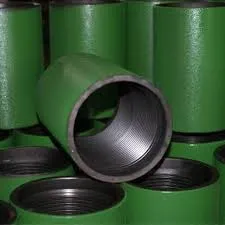- Afrikaans
- Albanian
- Amharic
- Arabic
- Armenian
- Azerbaijani
- Basque
- Belarusian
- Bengali
- Bosnian
- Bulgarian
- Catalan
- Cebuano
- Corsican
- Croatian
- Czech
- Danish
- Dutch
- English
- Esperanto
- Estonian
- Finnish
- French
- Frisian
- Galician
- Georgian
- German
- Greek
- Gujarati
- Haitian Creole
- hausa
- hawaiian
- Hebrew
- Hindi
- Miao
- Hungarian
- Icelandic
- igbo
- Indonesian
- irish
- Italian
- Japanese
- Javanese
- Kannada
- kazakh
- Khmer
- Rwandese
- Korean
- Kurdish
- Kyrgyz
- Lao
- Latin
- Latvian
- Lithuanian
- Luxembourgish
- Macedonian
- Malgashi
- Malay
- Malayalam
- Maltese
- Maori
- Marathi
- Mongolian
- Myanmar
- Nepali
- Norwegian
- Norwegian
- Occitan
- Pashto
- Persian
- Polish
- Portuguese
- Punjabi
- Romanian
- Russian
- Samoan
- Scottish Gaelic
- Serbian
- Sesotho
- Shona
- Sindhi
- Sinhala
- Slovak
- Slovenian
- Somali
- Spanish
- Sundanese
- Swahili
- Swedish
- Tagalog
- Tajik
- Tamil
- Tatar
- Telugu
- Thai
- Turkish
- Turkmen
- Ukrainian
- Urdu
- Uighur
- Uzbek
- Vietnamese
- Welsh
- Bantu
- Yiddish
- Yoruba
- Zulu
j55 coupling
Understanding J55 Coupling A Comprehensive Overview
In the world of oil and gas extraction, the efficiency and reliability of equipment are paramount. One of the critical components that facilitate these operations is the coupling, specifically the J55 coupling. Understanding what J55 coupling is, its specifications, advantages, and applications can provide insights into the oil and gas industry's operational dynamics.
What is J55 Coupling?
J55 coupling refers to a type of threaded connection used predominantly in the oil and gas industry for connecting pipe sections. The 'J55' designation specifies the yield strength of the steel used in these couplings, which is approximately 55,000 psi. The J55 designation is part of a larger classification system that categorizes steel grades based on their mechanical properties, specifically used in downhole operations.
Specifications
J55 couplings are typically manufactured from carbon steel and are designed to withstand high pressures and harsh environmental conditions. They often feature a tapered thread design that enhances the connection's strength and ensures a secure fit between pipe sections. The specifications for J55 couplings generally include
- Yield Strength Approximately 55,000 psi. - Tensile Strength Roughly 75,000 psi. - Wall Thickness Varies based on specific application requirements. - Length and Diameter Available in various sizes to accommodate different operational needs.
Advantages of J55 Coupling
1. High Strength-to-Weight Ratio J55 couplings provide exceptional mechanical strength, making them ideal for heavy-duty applications without adding significant weight to the assembly.
j55 coupling

2. Corrosion Resistance Many J55 couplings are coated or treated to resist corrosion, enhancing their longevity in harsh environments typical of oil and gas wells.
3. Versatility J55 couplings can be used in various applications, including both onshore and offshore drilling, making them a versatile choice for operators.
4. Ease of Installation The tapered thread design allows for easy and reliable installation, reducing the time and labor costs associated with pipe connection.
Applications
J55 couplings are primarily used in oil and gas well drilling. They connect casing and tubing strings, allowing for the efficient transfer of fluids and gases from the well to the surface. These couplings are crucial in maintaining the structural integrity of the well, preventing leaks and ensuring safe operation.
In addition to drilling operations, J55 couplings are also employed in completion and workover operations. Their robustness is particularly beneficial when dealing with high-pressure environments, such as deep-water drilling or heightened gas extraction scenarios.
Conclusion
The J55 coupling plays a vital role in the oil and gas industry, ensuring safe and efficient operations in challenging environments. With their high yield strength, corrosion resistance, and versatility, they are essential components for any drilling operation. As the industry continues to evolve with advancements in technology and techniques, the significance of reliable connections like J55 couplings will undoubtedly remain crucial for sustainable and efficient resource extraction. Understanding and utilizing such high-quality materials contribute to the overall performance and success of oil and gas operations—a factor that cannot be overlooked in these demanding environments.
-
Tubing Pup Joints: Essential Components for Oil and Gas OperationsNewsJul.10,2025
-
Pup Joints: Essential Components for Reliable Drilling OperationsNewsJul.10,2025
-
Pipe Couplings: Connecting Your World EfficientlyNewsJul.10,2025
-
Mastering Oilfield Operations with Quality Tubing and CasingNewsJul.10,2025
-
High-Quality Casing Couplings for Every NeedNewsJul.10,2025
-
Boost Your Drilling Efficiency with Premium Crossover Tools & Seating NipplesNewsJul.10,2025







